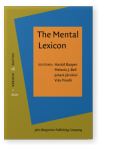Vol. 16:1 (2021) ► pp.2–22
The impact of embodied simulation in vocabulary learning
The aim of the present study was to demonstrate the multisensory nature of vocabulary knowledge by using learning designed to encourage the simulation of sensorimotor experiences.
Forty participants were instructed to learn pseudowords together with arbitrary definitions, either by mentally experiencing (sensorimotor simulation) the definitions, or by mentally repeating them. A test phase consisting of three tasks was then administered: in a recognition task, participants had to recognize learned pseudowords among distractors. In a categorization task, they had to categorize pseudowords as representing either living or non-living items. Finally, in a sentence completion task, participants had to decide whether pseudowords were congruent with context sentences. As expected, the sensorimotor simulation condition induced better performances only in the categorization task and the sentence completion task. The results converge with data from the literature in demonstrating that knowledge emergence implies sensorimotor simulation and showing that vocabulary learning can benefit from encoding that encourages the simulation of sensorimotor experiences.
Article outline
- Method
- Participants
- Apparatus and material
- Procedure
- Test phase
- Recognition task
- Semantic categorization task
- Sentence completion task
- Results
- Recognition task
- Proportion of correct responses
- Response times
- Recognition task
- Semantic categorization task
- Proportion of correct responses
- Response times
- Sentence completion task
- Proportion of correct responses
- Response times
- General discussion
- Acknowledgements
- Conflict of interest
-
References
